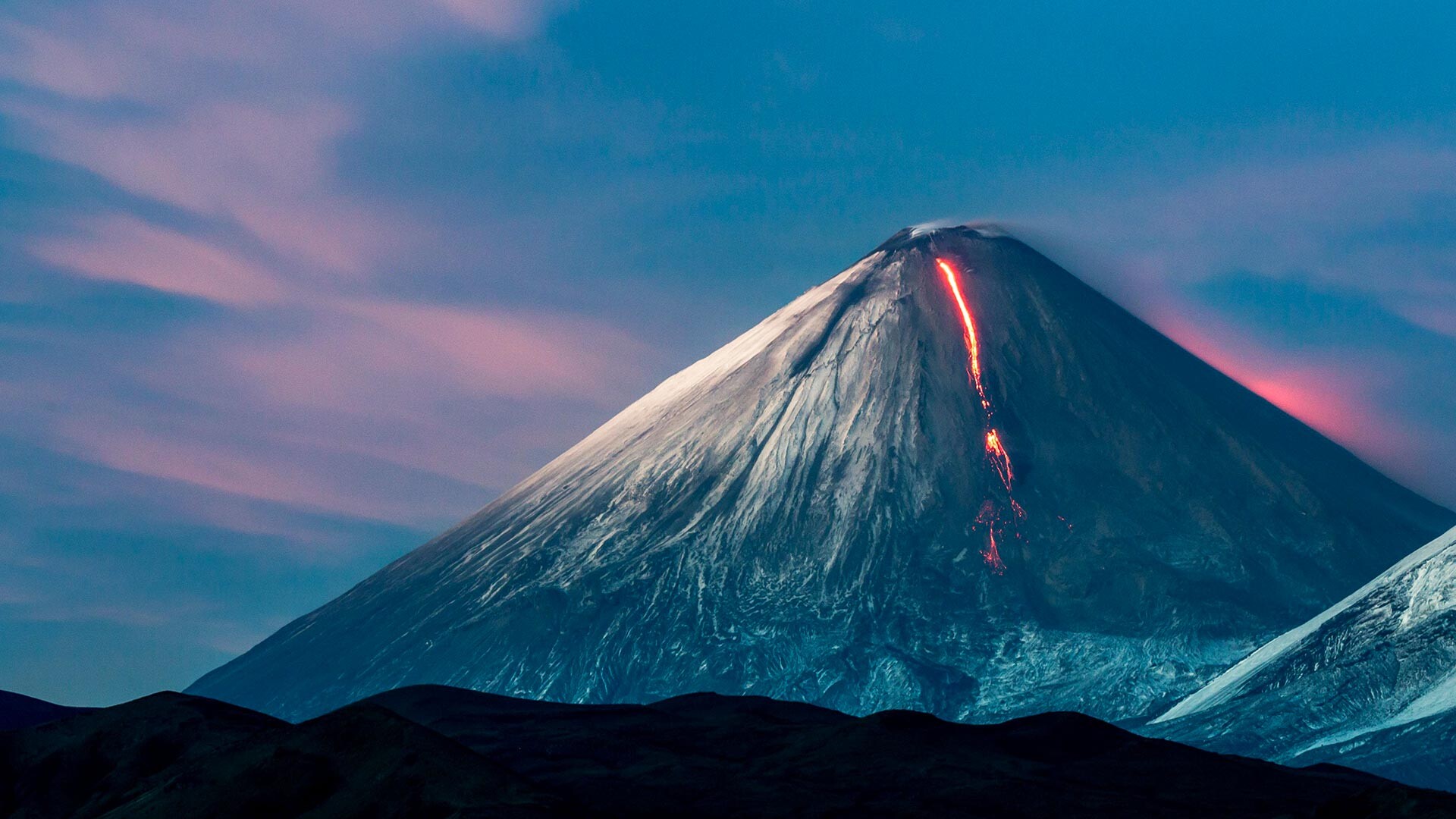
Klyuchevskaya Sopka.
Legion MediaThere are over 200 volcanoes in Russia, of which 30 to 60 are considered active, whereas the rest are believed to be extinct. Among those, whole volcanic fields may be found, which have now turned into mountain ranges. There are also so-called paleo volcanoes, which bear little resemblance to real ones, if any at all.
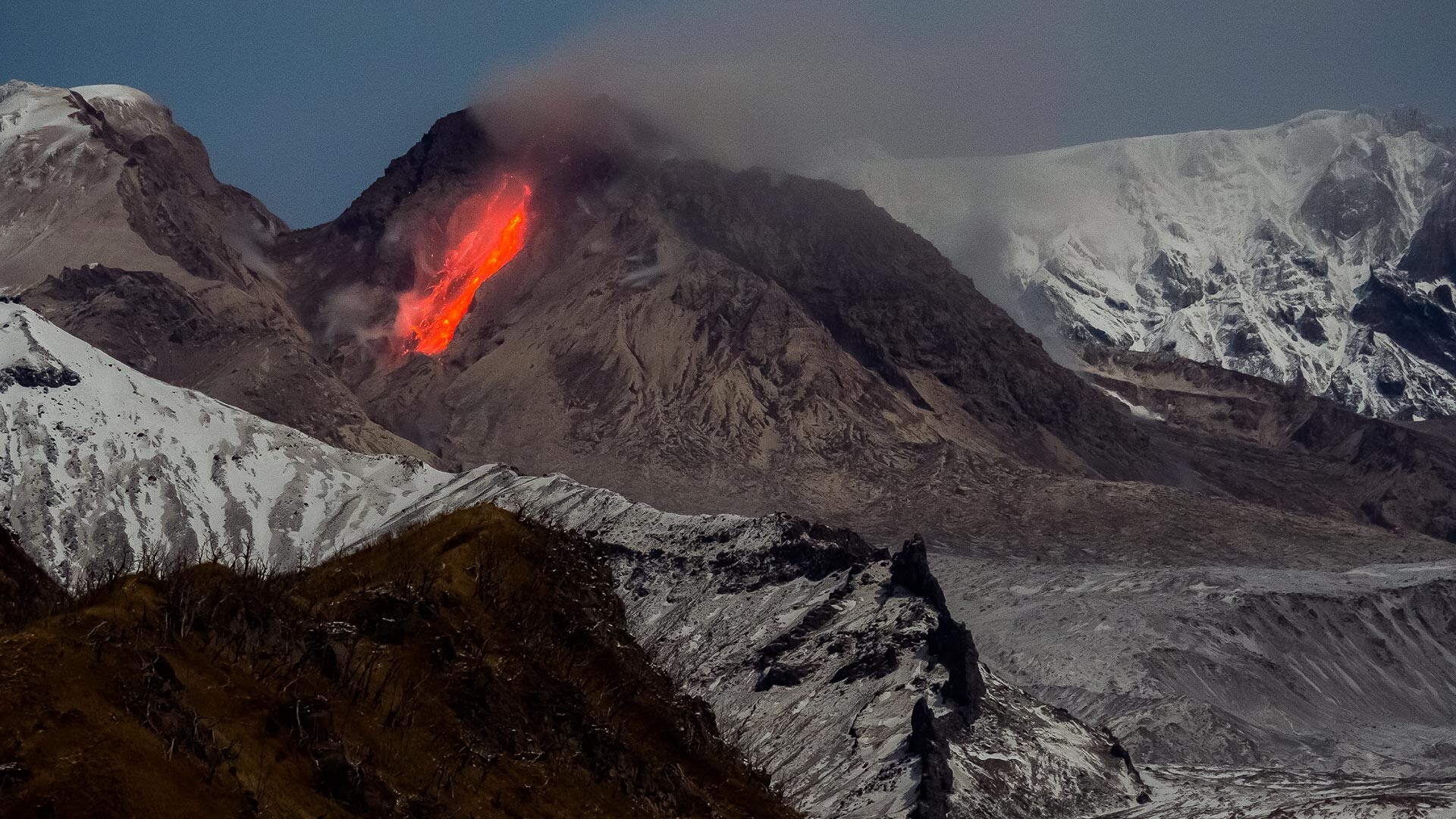
Kamchatka is home to most of Russia’s active volcanoes, although their exact number is unknown. A lot of them have been dormant for centuries or transformed beyond recognition: some submerged into the sea and became islands, some became extinct and developed into common mountains. This is the reason why researchers often differently evaluate the ratio of active and already extinct volcanoes. Some believe that active ones would hardly amount to two dozen, while others put their number at over 50. Yet, the nature of Shiveluch, the northernmost active volcano in Kamchatka, is beyond any doubt: it erupts quite often, almost every two years. One of the latest eruptions occurred in November 2022. Its column of ash typically reaches 4.5 kilometers in height, covering the village of Kluchi, which lies at the foot of the volcano.
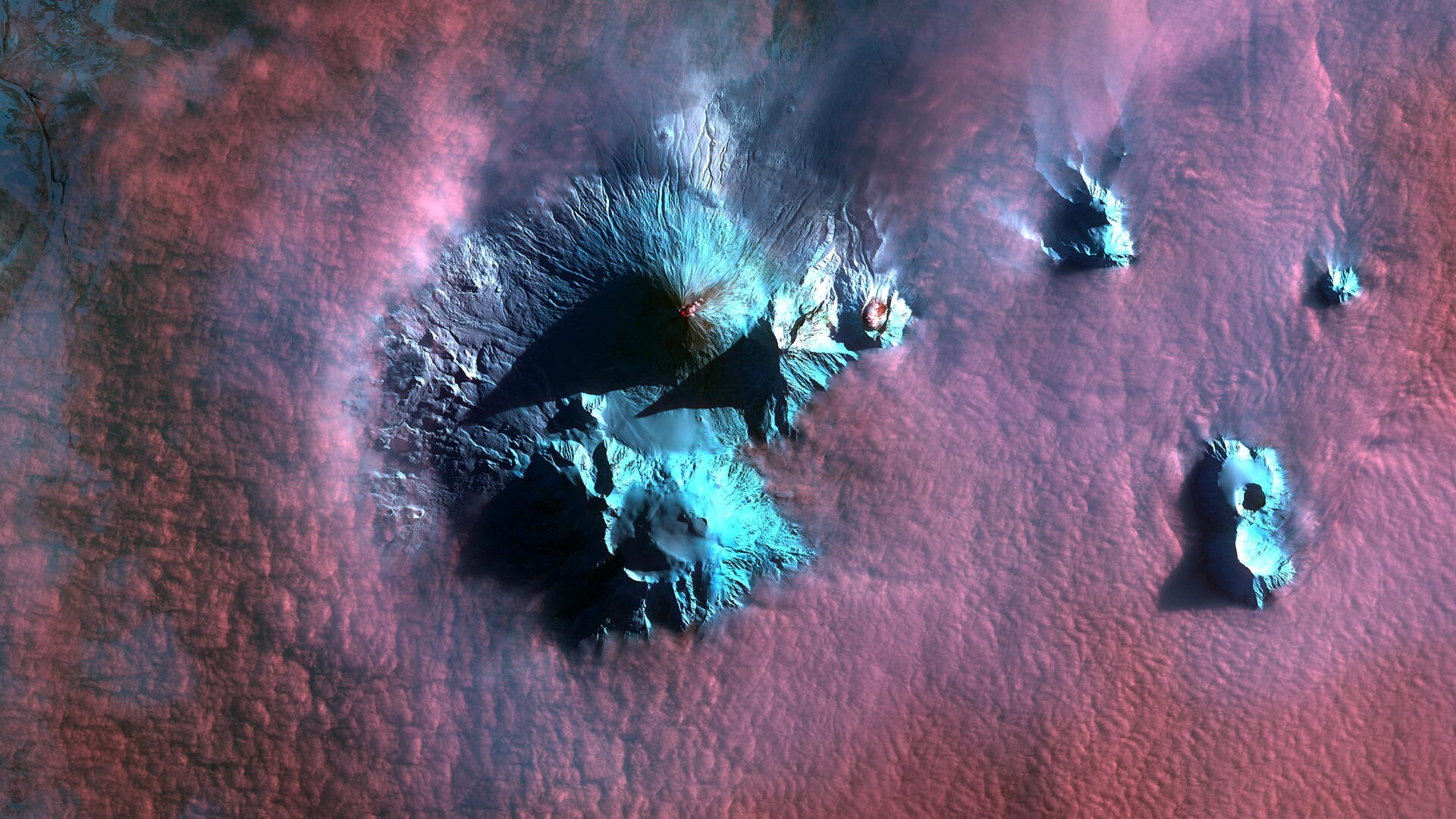
Together with Shiveluch, its close neighbor Klyuchevskaya Sopka, the highest volcano in Russia and Eurasia (4850 m), “woke up” in November 2022. It is also considered active: it has erupted 50 times in the past 270 years of research, spitting ash as high as up to 5 kilometers up in the air. As a rule, its eruptions can last from several weeks to a whole year.
Klyuchevskaya Sopka is a comparatively young volcano: it is only 7,000 years old. The volcano is one of the major landmarks of Kamchatka, which attracts tourists, despite it being obviously dangerous to visit. Klyuchevskaya Sopka is absolutely picture-perfect, resembling a regular cone complete with domes and craters.
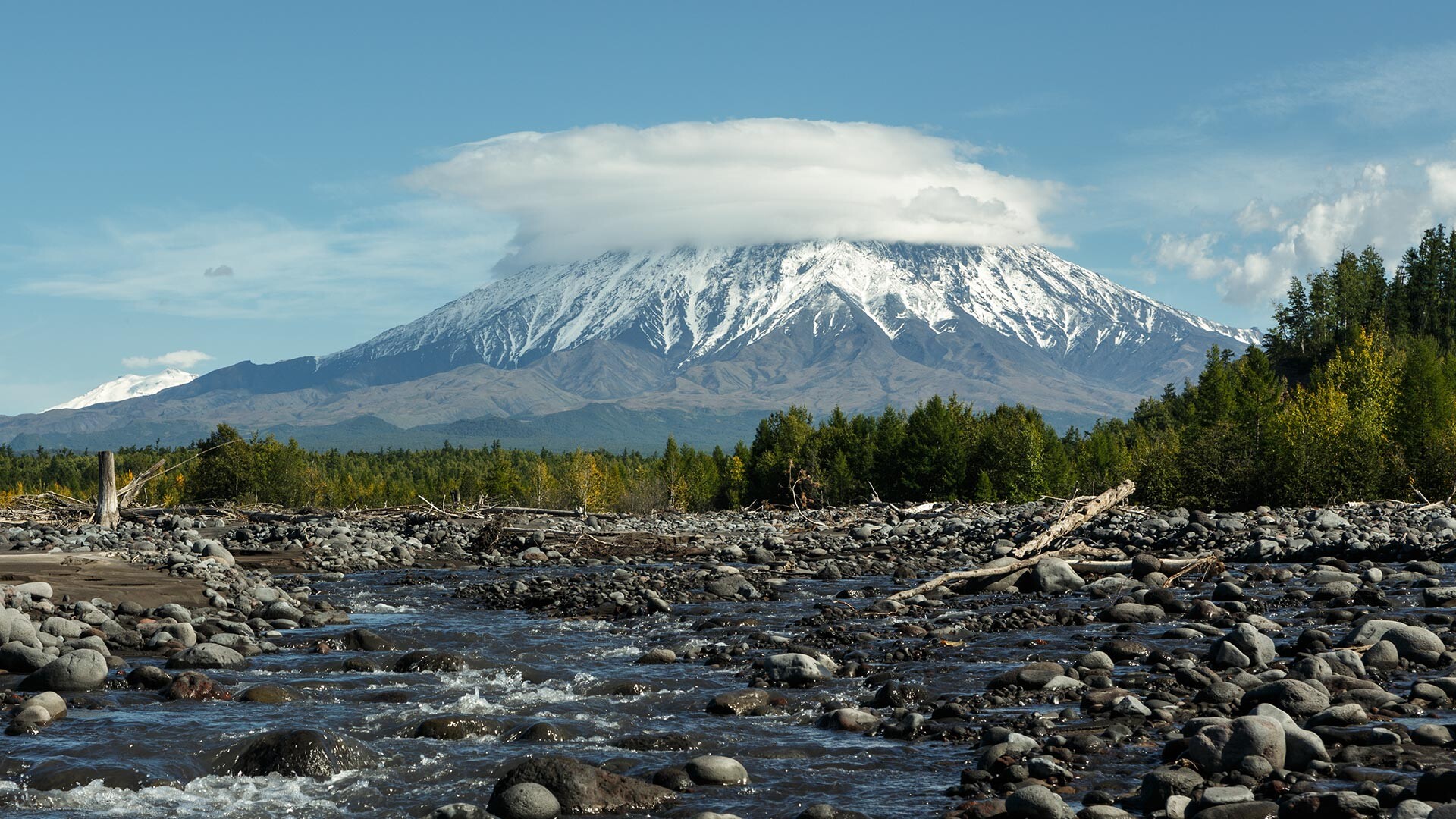
Tolbachik is formed by two volcanoes: Sharp Tolbachik and Flat Tolbachik, with the latter being active and one of the most spectacular ones. Whenever it erupts, liquid lava runs down its sides, turning into fire rivers. It last happened in 2012.

The latest eruption of the volcano on the Pacific Ocean coast was registered in 1923. While the volcano covered with glaciers is currently dormant, one can feast ones eyes on the beautiful Kronotsky national park. At its foot, there is Kronotsky Lake, as well as the famed Valley of Geysers.

A big part of the Kuril Islands used to consist solely of volcanoes. In actual fact, a lot of them submerged, but some volcanoes are still active. For instance, the symbol of Kunashir Island is a volcano called Tyatya (1,819 m), which last erupted in 1981. Scientists predict it will be dormant for yet another century. The volcano is located in such a picturesque, albeit a remote and deserted place, that it remains a dream of many extreme tourists to climb its peak.
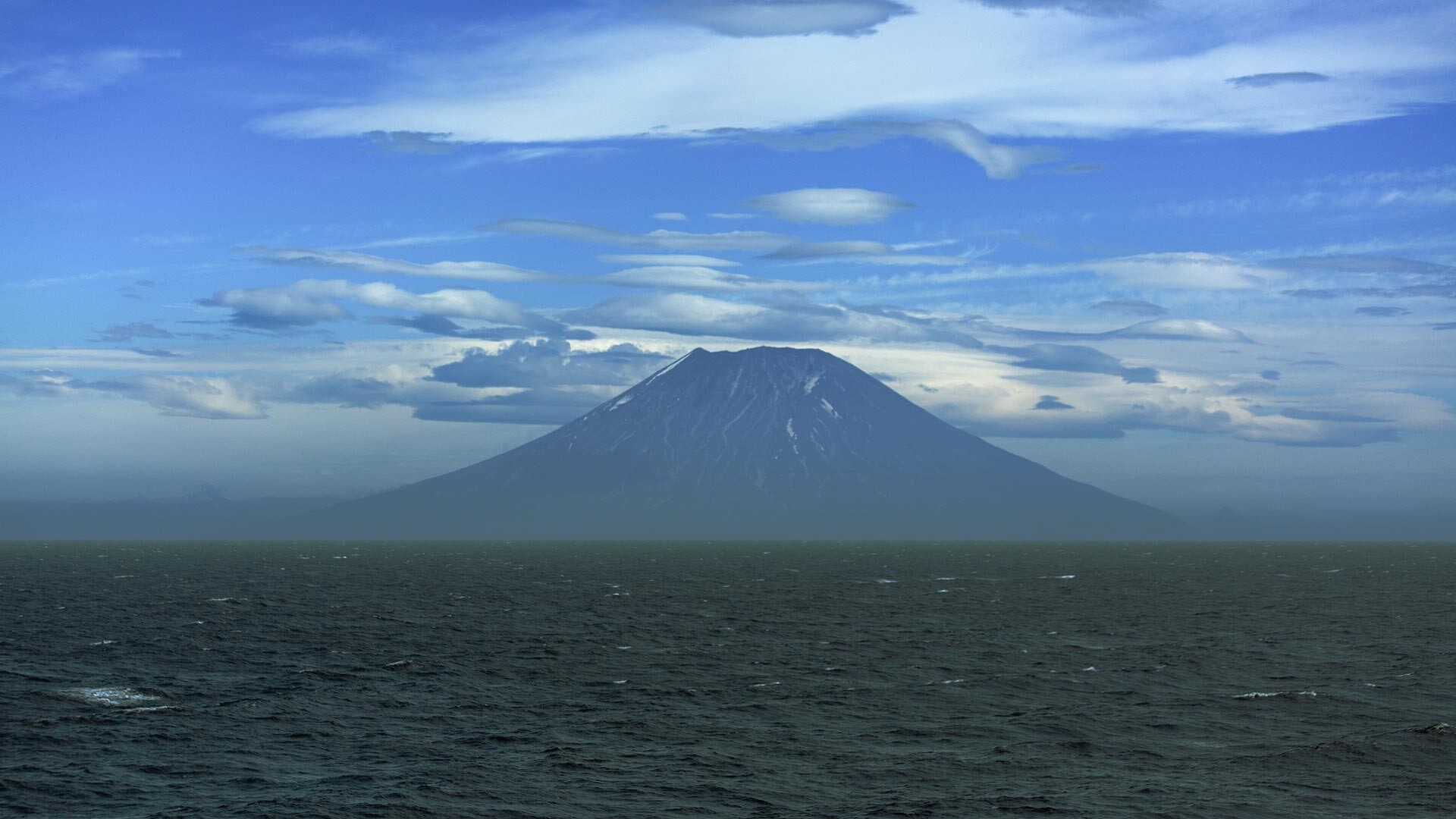
Meanwhile, Alaid, the highest volcano in the Kuril Chain (2,339 m) has, quite the opposite, become active over the past years. It erupted in September and October 2022, spitting out ash up to 3.5 kilometers high. Due to frequent eruptions, it has changed in shape a lot recently, with new cones and tunnels formed.

A whole island in Sakhalin Region used to be a volcano. Nowadays, Moneron Island has one of the most beautiful parks of the Far East, where one can see birds’ breeding grounds in the rocks, seal rookeries and pristine nature. Moneron volcano became extinct several million years ago, turning into an island rugged by low (up to 500 meters) mountains.

In the Vostochnye Sayany mountain range, there is a volcano, which became dormant 12,000 years ago. It bears the name of Pyotr Kropotkin, a well-known Russian geographer and revolutionary. By volcanic standards, it is not that high - about 120 meters. Yet, it is located in a stunning place, surrounded by rivers and valleys of extinct volcanoes. There is no civilization around, just pristine nature. This is why it is a rather rare destination for tourists.
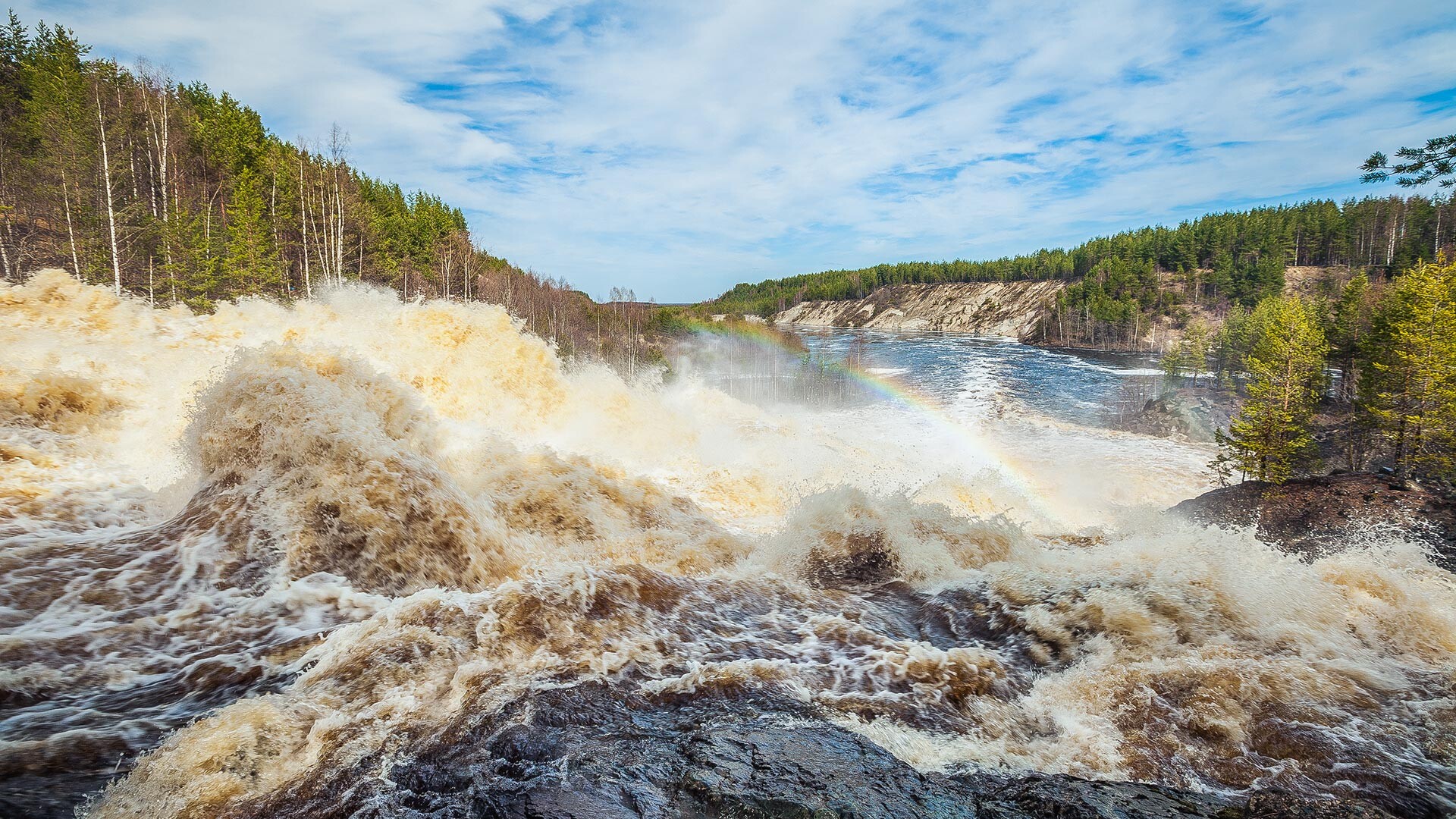
Karelia’s paleo volcano Hirvas is one of the oldest on our planet: it became extinct over 2 billion years ago, can you imagine? Nowadays, it looks like rocks covered with forest and indented with cliffs, precipices and barrages, lakes and waterfalls. It is one of Karelia’s most breathtaking natural sights.
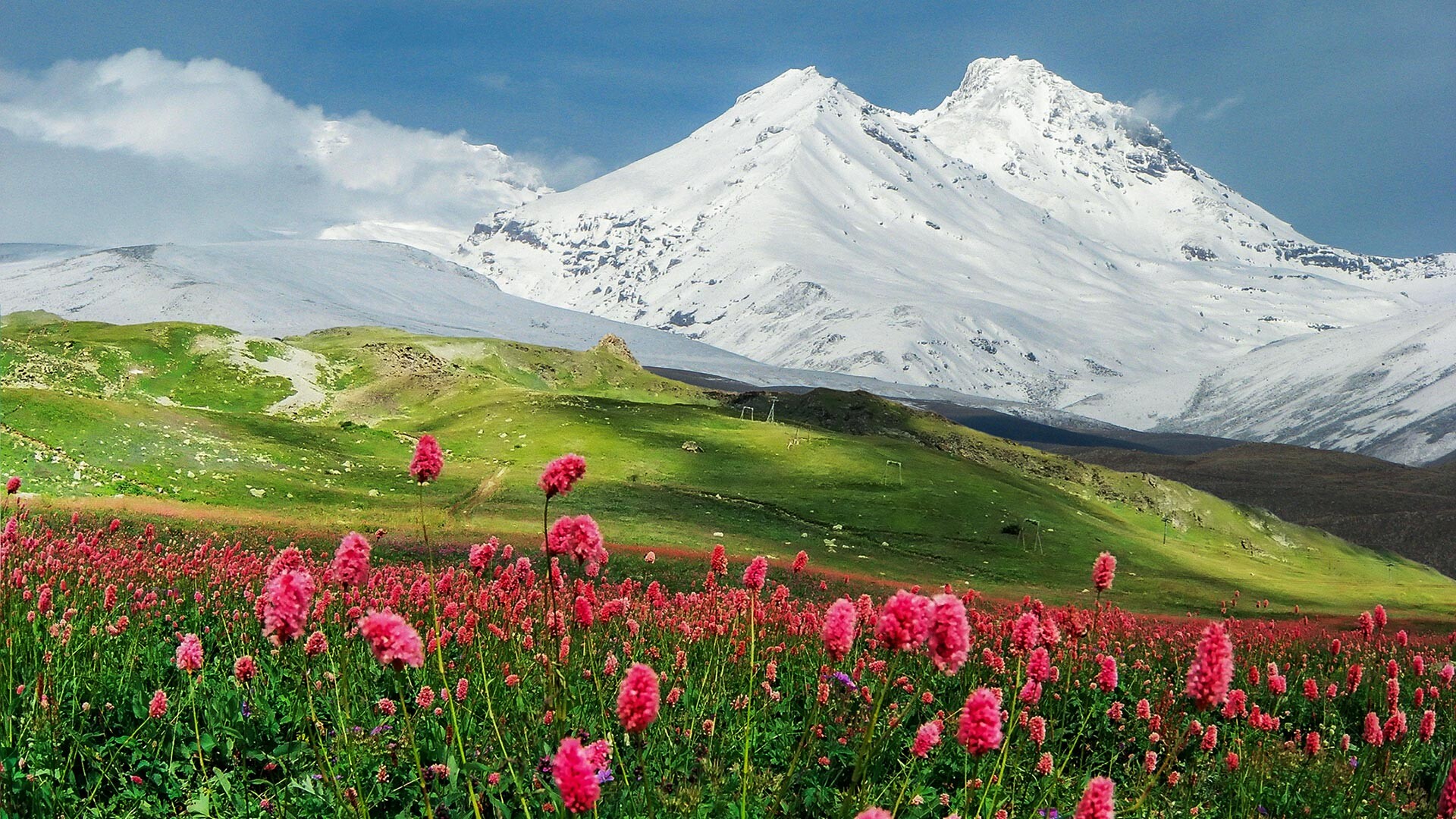
You would hardly believe it, but Mount Elbrus is also a volcano, a dormant one at that! Some scientists believe it may wake up as early as this century. Elbrus is over two million years old and its last eruption took place over 1,500 years ago, with ash spews registered merely 500 years back. Its peak stands at 5,642 meters, making it Russia’s highest point.
Dear readers,
Our website and social media accounts are under threat of being restricted or banned, due to the current circumstances. So, to keep up with our latest content, simply do the following:
If using any of Russia Beyond's content, partly or in full, always provide an active hyperlink to the original material.
Subscribe
to our newsletter!
Get the week's best stories straight to your inbox